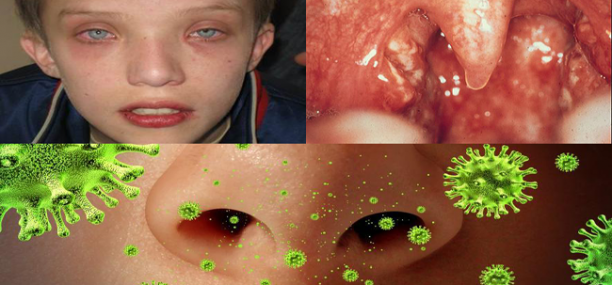Adenovirus Infections
Adenoviral infection (Adenovirus Infections, аденовирусная инфекция) is an acute viral infection common in children caused by one of 30 Adenoviruses that infects the humans and affects the tissue linings of the eyes, respiratory tract, intestines, and urinary tract, and unlike flu, diarrhea is characteristic in most patients with adenoviral infection.
Adenoviral infection accounts for about 10% of acute respiratory infections in children.
Pathogens – over 30 members of the family adenoviruses.
Epidemiology
1- Source of infection a sick person or a virus carrier.
2- Mechanism of transmission – aerogenic path – airborne.
Clinical picture
1- The incubation period 4-7 days, the disease starts abruptly (acute).
2- Intoxication Syndrome, Chills, mild headache, weakness, fever up to 38 – 39 C.
3- Catarrhal syndrome, is characterized by pharyngitis (redness, swelling, and pharyngeal granularity), conjunctivitis, injection of the sclera vessels, swelling and redness of the tonsils, rhinitis.
4- lymphadenopathy syndrome Increasing of several groups of lymph nodes (usually cervical and submandibular).
5 Changes in the digestive system: loose stools, often hepatosplenomegaly.
Complications and differential diagnosis – see. Section “flu.”
Laboratory diagnosis
In the blood test often mild leukocytosis, FTA, TPHA, ELISA.
Treatment
Detoxification, desensitizing therapy.
Verified by: Dr.Diab (January 7, 2017)
Citation: Dr.Diab. (January 7, 2017). Adenoviral infection. Medcoi Journal of Medicine, 1(2). urn:medcoi:article15937.














There are no comments yet
Or use one of these social networks